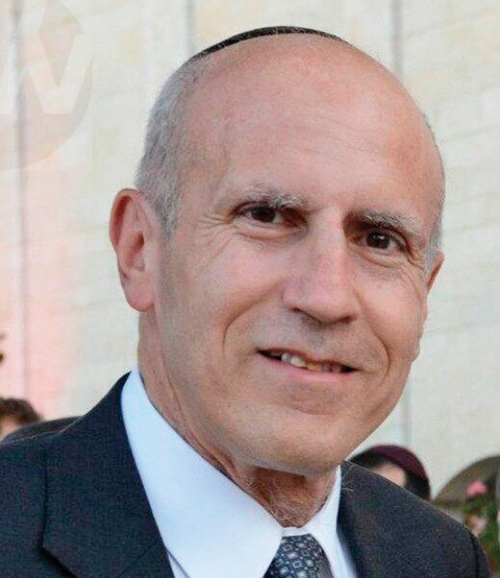
During the past few weeks, there has been renewed discussion in Israel about changing the laws about exempting yeshiva students from serving in the IDF. Chief Sephardic Rabbi Yitzhak Yosef made some highly inflammatory, extremely ill-timed, and terribly hurtful comments, claiming that Haredi Jews will leave Israel en masse if the government ends the military exemptions for yeshiva students in Israel. Critics and supporters of the status quo are lining up on both sides to deal with this thorny problem.
The subject certainly deserves further discussion, and it’s likely that there will be modifications to the current rules. However, there is another issue facing the Haredi community that might be more of an existential threat to Israel than the question of military exemptions.
I’m speaking about integrating the Haredi community into the Israeli workforce. Consider the following statistics:
- Haredim currently make up 12% of the Israeli population. In the next generation or two, the community is expected to grow to 27% of the population.
- In 2021, 52% of Haredi children were living below the poverty line.
- Only 49% of Haredi men are employed, with only 3% working in high-tech jobs.
It doesn’t take a genius to realize that if the Haredi population increases to 27% of the total, and only half of this group is employed, Israel will be facing a major economic problem.
According to the Israel Innovation Authority, Israel is now facing a shortage of about 18,500 tech positions. Without a dramatic increase in the number of software programmers and engineers, the state of Israel may lose its defensive edge.
That’s what Stuart Hershkowitz is trying to change.
Hershkowitz is chairperson of the board at Nishmat and president of the Orthodox Union in Israel. However, his main passion is the work he is doing as a board member for the Jerusalem College of Technology (JCT) and the changes he is trying to create in the Israeli workforce.
Fifty years ago, I graduated high school in the same class as Hershkowitz. We recently reconnected, and I learned more about Hershkowitz’s groundbreaking work. Hershkowitz’s dream is to be able to revamp the entire system, so that the Haredi community is fully equipped to participate in the Israeli high-tech workforce. According to Hershkowitz, the problem must be attacked on three fronts to enable this to happen: academic, social and economic.
In terms of the academic challenge, only 10% of Haredi men (compared to 70% of the non-Haredi population) have a high school matriculation certificate, and most have no training in STEM subjects. However, their aptitude for intellectual activity is very high, as is their ability to absorb complex topics (Talmud and Jewish law).
In terms of the social challenge, the Haredi world is one where the sexes are separated in almost all aspects of life, so it’s important to find appropriate ways to promote their entry into the workforce where they will feel comfortable and prepare them with the social skills they will require.
In terms of the economic challenge, most Haredim do not have the financial means to pay for a degree. Many of them come from large families and are themselves already married with families of their own.
Hershkowitz has identified ways to address these challenges and allow for more Haredim to be trained at JCT so they can succeed in the workforce. The school offers Haredi students reinforcement courses in STEM, study skills training, preparation for the admissions exam, and tutoring. In terms of social support, the school offers mentorships, professional workshops and career guidance and counseling, in separate sex settings. To address the economic challenges, the school offers academic scholarships to members of the Haredi community and living expenses for the pre-academic year and the first two years of study at the college.
Has the program succeeded? The proof is in the numbers. Of the approximately 4,900 of the students at the Jerusalem College of Technology today, more than 2,000 now come from the Haredi community. In 2007, there were less than 500 Haredi students enrolled at the college, a 300% increase.
The school’s placement rate of nearly 90% puts it among the top producers of high-tech professionals in Israel, and many of these graduates now come from the Haredi community. They are working for high-tech companies in Israel such as Intel, NetSource, Texas Instruments and others. And, they are succeeding at their jobs.
Tammy Mandel, a member of the Belz Hasidic sect, is the eldest of 11 children and was expected to support her family as a seamstress. Instead, she completed a bachelor of science degree in computer science at JCT. She was then invited to apply to the school’s exclusive cyber elite program for Haredi women. After she graduated from the school, she was hired to work for Intel in its cybersecurity department.
Aharon Samet is another success story. He grew up in Mea Shearim and spoke only Yiddish. Despite the lack of family and community support, he decided to enter JCT’s preparatory program. He worked in the morning and studied in the afternoon. When he needed to stop working to focus on his studies, JCT found him a scholarship. Today he is gainfully employed at a cybersecurity company.
Haredim have often been criticized for their low rate of employment. However, when offered the right opportunity, many Haredim have demonstrated that they are not only capable but excited to enter into the workforce — as long as their essential values and religious lives are not threatened. Hershkowitz should be applauded for recognizing the challenge and effectively promoting this important change in Israeli society.
Michael Feldstein, who lives in Stamford, is the author of “Meet Me in the Middle” (meet-me-in-the-middle-book.com), a collection of essays on contemporary Jewish life. He can be reached at michaelgfeldstein@gmail.com.







